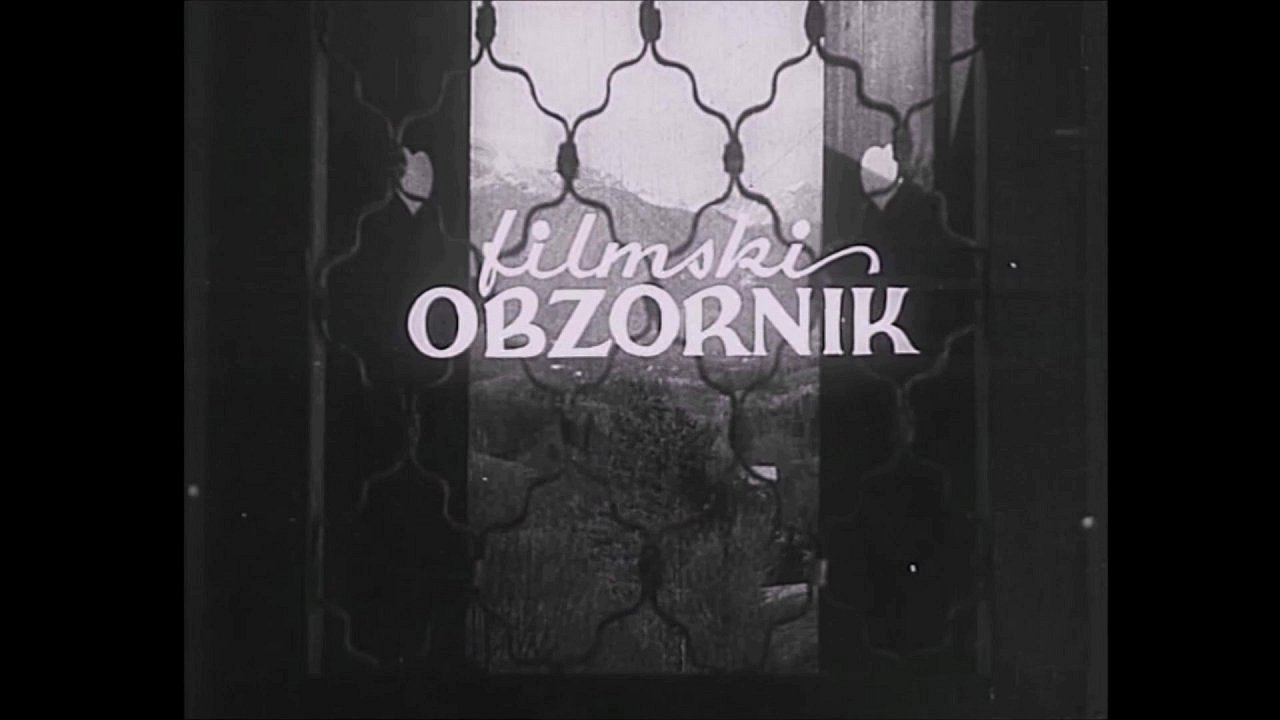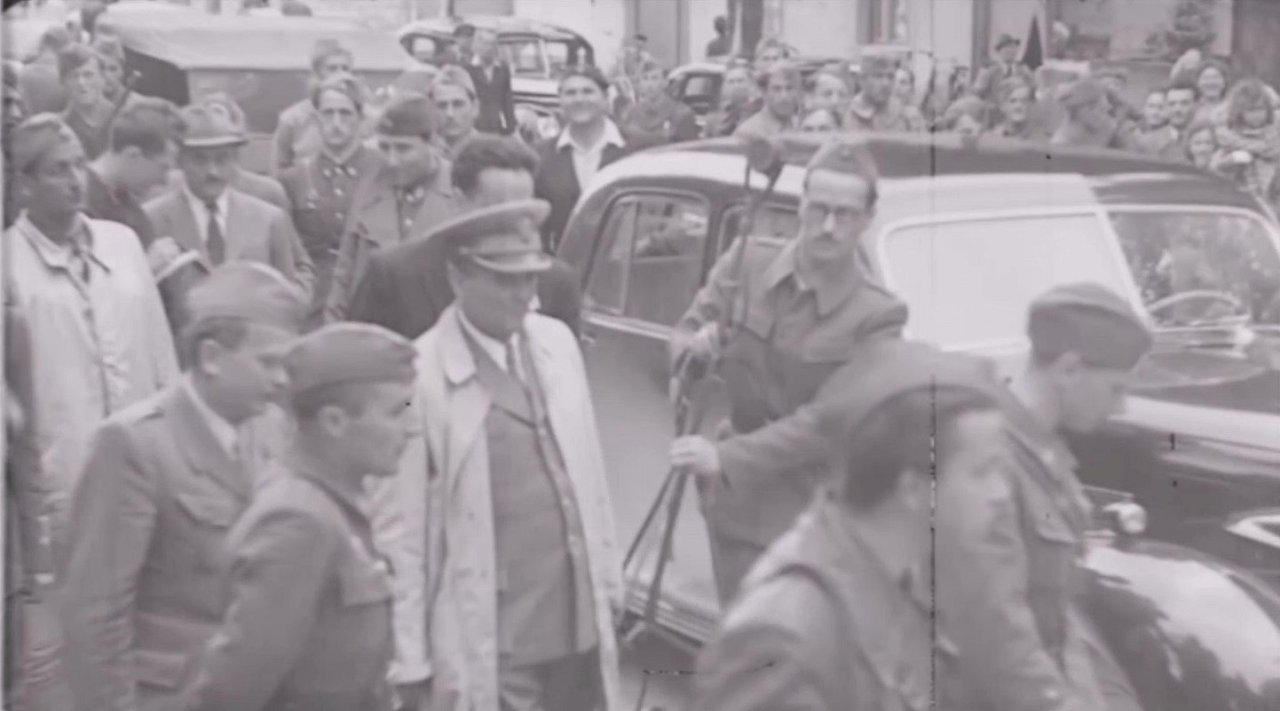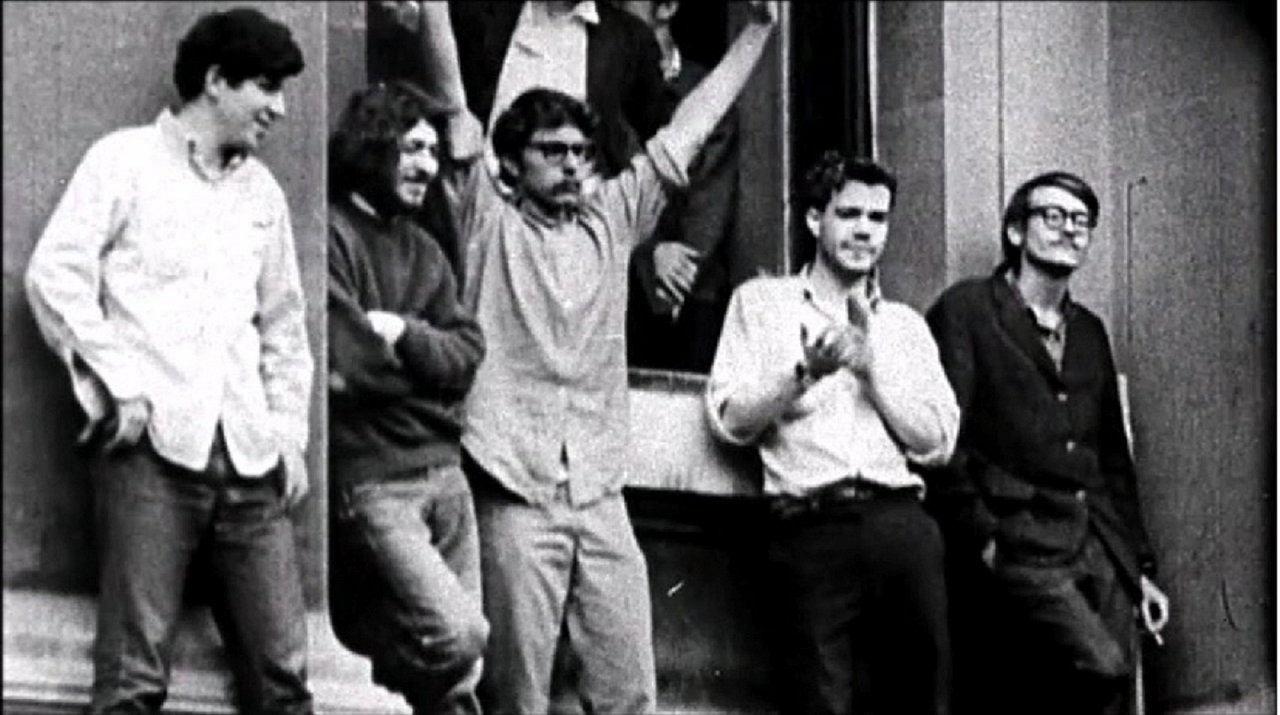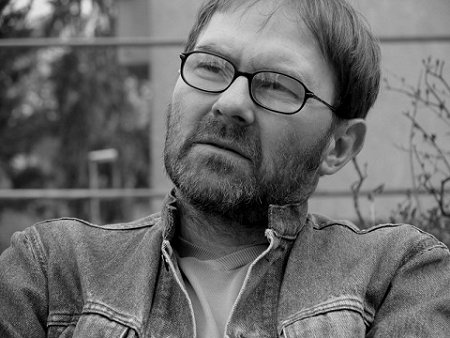PhD Andrej Šprah: Film newsreels in the whirlwinds of information, propaganda and awareness
31.5.2023

If propaganda, despite all its dangers, reminds us that we must face the world we live in and encourages us not to remain neutral, but to take a stand, I agree with it. It will help us to design our own, personal resistance movement. After all, we are the ones who allow ourselves to be cheated.
Robert Vas
Questions of the historical relevance of images of the past are exacerbated by the problem of the relationship between the image and the truth, or the reality of the image, which raises the question of the difference between historiography and historiophoty. In this fundamental discrepancy, historiography means the representation of history in verbal narratives and written discourse, while the term historiophoty defines the representation of history and its reflection in visual images and cinematic discourse. In the present intervention, we are mainly interested in the issue of historiophoty in relation to the specific form of documentary production, i.e., of the film newsreels.
In its starting point, historiophoty represents the process of "opening up possibilities" for awareness of the decomposition (of the notion) of a historical event as an object of scientific knowledge. It does not come from the assumption of "photographic" or "audiovisual" evidence as a more relevant or credible historical fact, but is based on the realization that it is crucial to be aware of how (in what way, with which means) a film or audiovisual image creates or acquires its own meaning. The key task and mission of historiophoty reflects the necessity to simultaneously examine "historical facts" and examine the ways in which their meaning was created. Its central mission is based on the principle of double awareness; on the one hand, it comes from an awareness of the (subjective) nature of historical "facts", and on the other, from an assumption about the specific (subjective) nature of film or audiovisual "facts". In the process of developing the film newsreel or anti-newsreel practices, such shifts in the direction of "awareness" are the result of formal innovations and/or changes in expressiveness. But in order to better understand these changes, we need to take a closer look at some of the fundamental provisions of the film newsreel.
Film newsreel, also known as film weekly, film journal, film news, film chronicle, film overview, etc., is defined by the Slovenian Film Lexicon as follows: "A type of documentary film that informs the viewer about current events in a certain period of time in a concise and transparent manner (a week, a month); usually 10-15 minutes long, includes several thematic sections (from slightly longer reports to short news stories)." In the geo-historical review of Newsreels across the World, Peter Baechlin and Maurice Muller-Strauss list five basic provisions of the newsreel: "(a) Regular screenings at relatively short intervals, which may be monthly, fortnightly, weekly or even bi-weekly, depending on the countries of origin. (b) Each issue covers individual thematic sections that are not directly related. (c) In principle, the content of the presentation is related to the current events of its time. (d) Films are generally of standard length. (e) They present topics in a simple and direct way, unlike magazine shows and documentaries, which are often interpretive and didactic."
The origin of the newsreel coincides with two revolutionary changes in the film industry: (1) the introduction of movie theaters, which replaced traveling film shows and required a regular but varied and interesting program; (2) the transition from a system of purchases to a system of renting film copies. The beginnings of newsreels production date back to 1905 in the USA and around 1907 in France. It was then that Charles Pathé founded his Journal, which had branches in the United States, the Commonwealth of Nations and Europe. He was followed in 1908 by Léon Gaumont and Sociéié Eclair. In 1909, the Pathé brothers went to London and started the pioneering newsreel project Pathé Gazette. The power and usefulness of film forms for event reporting in all social spheres were soon realized by all those who wanted to use them to control the field of information and indirectly appropriate the possibility of shaping the "truth" or influencing its interpretation. The newsreels thus soon became a means of extremely effective propaganda, as they were created in accordance with the purpose and aspirations of the interested ruling regimes or the capital hinterlands that financed them. In such a situation, a peculiar relationship between facts, events and information began to be established, in which three fundamental strategies prevailed: propaganda, indoctrination and awareness.
Similar to the rest of the world, the political system in the SFRY after the Second World War was aware of the propaganda value of film newsreels, as they started creating them immediately after liberation. The initial centralized production was soon adapted to the needs of the individual republics, which means that Slovenia started its own newsreels production in the same year. Between 1945 and 1951, 54 issues of film newsreels were recorded in this way. Each unit lasted from 12 to 18 minutes. The entire production comprises of 21,811 meters of film tape, which would mean nine feature films of "standard" 90-minute length. Although their creation in individual republics ended, federal production continued until the end of the 1980s; until then, newsreels (under the title Film news) had to be shown as a prelude to full-length feature films in cinemas throughout the SFRY.

Filmske novice 2: »Maršal Tito v Ljubljani« (1945), (Slovenian Film Archive at the Archives of the Republic of Slovenia)
At the content level, the beginnings of Slovenian newsreel production were mainly dominated by political and awareness-raising themes related to the war of liberation, the revolution and the personality cult of Marshal Tito. Film news 1: "Ljubljana welcomes the liberators" (1945) premiered on 15 June 1945 as a prequel to S. M. Eisenstein's feature film Ivan the Terrible (1944). Movie news 2: "Youth for Tito; Marshal Tito in Ljubljana" (1945), were entirely dedicated to the president of the federation, with the third issue ("Comrade Kardelj in Ljubljana; Trieste; Bazovica; Renovation of Rašice; On the other side of Soča; On a karst field; Over hill and dale" (1945)), the field of information and indoctrination began to spread to other traditional spheres of information. From the point of view of historiography, the content emphasis of individual issues as a whole and of each individual contribution are of key importance. The content was dominated by "standard topics": the current political situation (internal political events; foreign political events); economy; culture; social and health issues and sports and leisure activities. From the point of view of historiophoty, the key issue is the use of "filmic means of expression" and audiovisual discourse.
In this context, ground-breaking editions or contributions were essential - i.e., situations where a certain creative approach appeared for the first time or "stood out" from the standard(ized) formal scheme. In such a perspective, we can distinguish three developmental stages of creation in particular: (1) the initial phase, in which the "fascination over the image" and the use of real sounds dominate, while the commentary is (still) mainly informative; (2) the central phase, dominated by ideological indoctrination commentary that controls and "manages" the audiovisual material; (3) the final phase, where a pronounced return to "preoccupation with the image" and the (artistic) expressive possibilities of the film medium is perceptible. From the perspective of the development of Slovenian film creativity, the fact that newsreels represented a "training ground" for filmmakers who learned how to use cinematic expressiveness and technology is crucial. Among them were a number of the most prominent Slovenian directors of feature films: Mirko Grobler, Jane Kavčič, France Kosmač, Igor Pretnar and France Štiglic. In such a development, it is extremely interesting that the concluding episode of the last Slovenian newsreel (No. 45 from 1951) is "Filming and scenes from Kekec". This means that the production ended with a documentary-about-films; reportage about the production of one of the biggest film hits in Slovenia.
The initially raised question of anti-newsreel practices as a form of "awareness" refers to a series of creative provisions of the newsreel, among which the so-called "all-knowing objective commentary" (Voice of God or Voice of Knowledge) - which explains to us how to "correctly" look at what we see on the screen - and film music - which directs attention to a certain ideological basis (for example, battle chants, revolutionary songs, etc.) –, fundamental means of indoctrination and propaganda. Therefore, those anti-newsreel tendencies that emerged as a kind of "counter-information" in response to the extraordinary expansion of commercial, ideologically driven newsreel production, served different strategies: instead of commentary, they sought for social actors to "speak" directly (i.e., "get the right to speak"). These counter-reflections were rampant at the outbreak of the most violent clashes in the class struggle; in them, mainly labor and trade union movements, critical initiatives and revolutionary collectives gave their vision of the world. They became means of awareness, which flourished in the 60s of the twentieth century in the liberation turmoil in Latin America, within the revolutionary movements in the United States, in the wake of the storm of resistance that swept across the European West and flourished most intensively in France, Italy, Germany and Great Britain; but also in the socially critical reform efforts in Eastern Europe, which experienced their formal and symbolic culmination in Czechoslovakia in the famous "Prague Spring" in 1968.

Columbia Revolt (Newsreel #14); New York Newsreel Collective (1968)
The last wave of anti-newsreel movements rose in the face of new forms of social struggles and protest unrest that characterized the first decade of the new millennium. From anti-globalist protests, through the activist activities of the Occupy movement, or worker, trade union and peasant revolts, to local insurgent movements around Europe and the world. This is how a new critical film initiative was born in Slovenia in the form of the informal collective Obzorniška fronta (Newsreel front) gathered around the art projects of Nika Autor, who titled one of her most high-profile film and art projects Newsreel 55. With this symbolic numbering of the new newsreel project, the continuation of the countdown began, completed or interrupted a long time ago in 1951.
Dr. Andrej Šprah, head of the research and publishing department of the Slovenian Cinematheque, docent for the field of history and theory of film and television at the Academy of Theatre, Radio, Film and Television of the University of Ljubljana and for the field of visual arts at the Academy of Visual Arts A.V.A. He runs andragogic-pedagogical programs at the Slovenian Cinematheque. He is a film theoretician, the author of numerous essays and debates in which he discusses the phenomena of film documentary, global socially engaged film, Slovenian film and the cinematography of the former Yugoslavia.





